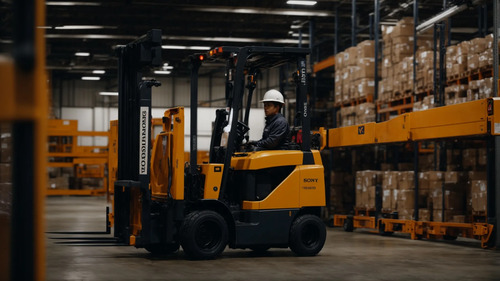Running an efficient warehouse is the backbone of a successful supply chain. Operators have to juggle various tasks, from inventory management to ensuring worker safety. Equipping yourself with the right resources is essential to meet the demands of this dynamic environment. To help you stay at the forefront of warehouse operation best practices, we curated a selection of essential tools and programs. Below, we look at training, software solutions, safeguarding protocols, automation advancements, and opportunities for professional growth.
Essential Training Programs for Warehouse Operators
Preparation and knowledge are key to the successful execution of warehouse duties. Effective training programs cover a wide range of topics, including inventory tracking, tool handling, and logistics planning. Structured training ensures that all staff are on the same page, leading to smoother operations and a more cohesive work environment.
Comprehensive training isn’t limited to new hires. Seasonal refreshers and courses on new techniques or regulations ensure that long-term employees remain at the top of their game. Competent operators can minimize errors, reduce injury rates, and keep up with best practices that evolve over time.
Don’t forget, safety training is crucial, too. New hires and veterans alike need to understand the importance of workplace safety standards, including proper workers compensation insurance, to prevent on-premise accidents and ensure a secure environment for all employees.
Advanced Inventory Management Tools and Software
Inventory management can make or break the efficiency of a warehouse. Advanced tools and software automate the tracking of goods, streamline storage, and facilitate order fulfillment. The right software enables operators to manage stock levels proactively, reducing the risk of overstocking or stockouts.
Today’s market offers a range of enterprise resource planning software solutions that integrate various aspects of warehouse management. These systems often include advanced features such as real-time data analysis, forecasting, and automated reordering, which can collectively boost the efficiency of warehouse operations.
Barcoding and radio-frequency identification (RFID) technologies are also at the forefront of inventory management. They provide quick and accurate tracking of products as they move through the supply chain. Using these tools can help reduce the time spent on manual counts and the likelihood of human error.
Safety Protocols and Equipment for Warehouse Staff
Safety within the warehouse is not only a regulatory requirement but also a fundamental aspect of operational excellence. Implementing robust safety protocols protects employees from workplace hazards and accidents. Effective measures range from the provision of personal protective equipment (PPE) to regular safety audits and drills.
Establishing clear safety procedures and signage helps foster a culture of safety awareness. With routine training, warehouse staff become adept at identifying risks and responding appropriately to potential dangers. This proactive stance towards safety can reduce downtime caused by injuries and improve overall productivity.
Investing in ergonomic equipment and tools can also enhance warehouse safety. Items such as anti-fatigue mats, adjustable workstations, and safety-enhanced forklifts contribute to a reduction in strain-related injuries and improve worker comfort while handling tasks.
Warehouse Automation: Enhancing Efficiency and Accuracy
Automation is revolutionizing warehouse operations by boosting efficiency and accuracy. Automated storage and retrieval systems (AS/RS), conveyors, and sortation systems reduce the need for manual labor and expedite the movement of goods. These technologies are game-changers in managing high volumes of products with precision.
One of the most notable advancements in warehouse automation is the advent of robotics. Autonomous mobile robots (AMRs) and robotic picking systems can significantly enhance order processing speed while reducing errors associated with manual picking. They provide a scalable solution for businesses experiencing growth or seasonal peaks.
The integration of warehouse management systems (WMS) with automation technologies allows for seamless coordination between digital and physical workflows. Data collected by sensors and robots inform decision-making processes, enhancing the responsiveness of operators to changing demands.
Overall, a combination of robust training, cutting-edge inventory management systems, diligent safety practices, strategic automation, and strong commitment to professional development form the pillars of success in warehouse management. By embracing these resources, warehouse operators can ensure efficient, safe, and progressive operations in an ever-changing landscape.
